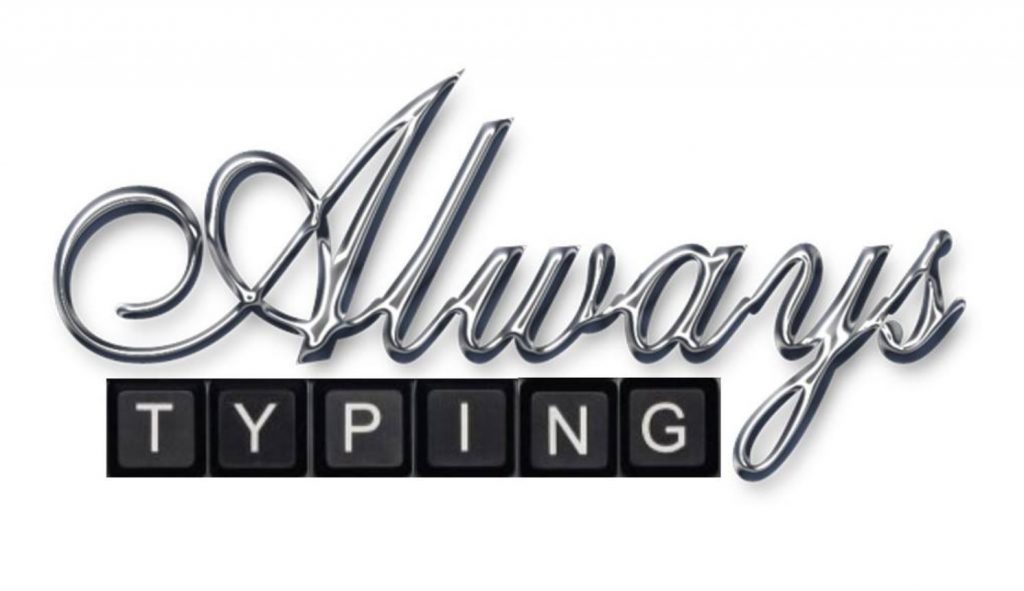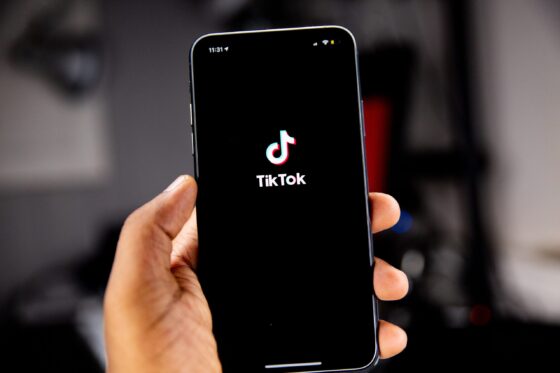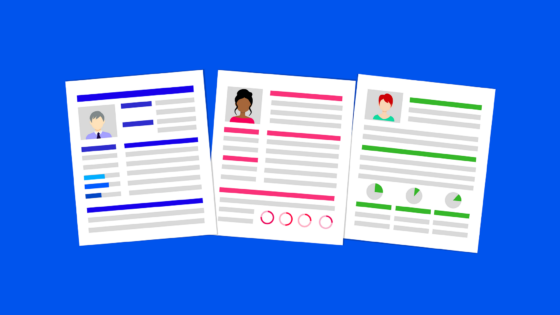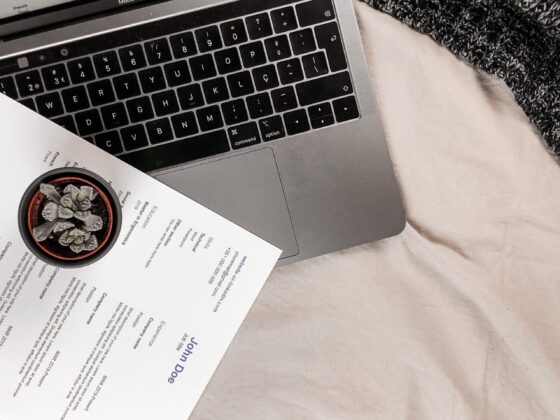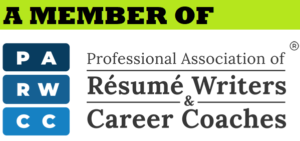93% of employers deem soft skills as essential for workers to succeed. But, what exactly are soft skills? And what are hard skills? And how do you showcase both in a resume? A lot of people get confused about the differences between hard skills vs. soft skills. Luckily, after this article, you won’t be one of them! Keep reading to discover more about each. What Are Hard Skills? Hard skills are the ones you’ve learned through hands-on experience, training, or education. These skills are measurable, and it’s easy to see the progression of growth in them throughout your career. Hard skills are often interchanged with technical skills. Though, this should not be confused with technical proficiencies which are commonly outlined on resumes to showcase the software and hardware someone has proficiency in. Hard skills are concrete abilities you have developed. Some of these skills are easier to learn than others. Depending on your industry, you may have to prove your expertise before you get hired for a job. For example, lawyers pass the bar exam, and computer professionals take programming tests. Hard Skills Examples There are numerous hard skills we could highlight, but we’ll outline five common hard skills that are hot in today’s hiring market. Those include: SEO Marketing People cannot naturally develop expertise in SEO marketing. This is a skill that people must learn through courses, hands-on experience, or other types of education, such as marketing degrees or certifications. Language Proficiencies Speaking another language is a hard skill that many companies want. The need for translators or bilingual professionals is on the rise. While a lot of people do learn more than language as a child, just as many learn the language through other means. This is a hard skill that could get you far in your career if you decide to develop it. Programming Languages The tech industry is a rapidly advancing and ever-changing area that is always looking for new professionals. Learning a programming language is a very popular hard skill that is in demand. Budgeting Let’s face it, not everyone is good with money and definitely shouldn’t be in charge of a company’s budget. This hard skill is one that people can learn and develop over time. Website Development Again, we go with a tech hard skill. Designing a website is one of the easier-to-learn hard skills. Many companies want website developers on staff and may require a test project before hiring a new person. What Are Soft Skills? Soft skills are developed throughout your life and aren’t easily learned through training or courses. These are “people skills” or “interpersonal skills” that many job descriptions highlight. Soft skills are directly tied to your personality. They often highlight your personal motivations or reasons behind your actions. Soft skills are just as valuable in the workplace as hard skills. Soft Skills Examples The following soft skills are the most popular ones listed in job descriptions. They are: Communication Communication is a very important soft skill needed in the workplace. Employees communicate with numerous people every day, from their coworkers to clients to their leaders. Being able to articulately communicate in a way that doesn’t confuse or offend others is a must. Leadership Not everyone is leadership material. This is why leadership is considered a soft skill. Being able to motivate, empower, and lead others is a skill that some people are simply born with. Highlighting your leadership abilities on your resume is vital if you want to progress. Even if you don’t hold a leadership role, you can still highlight examples of leadership in your resume. Decision-Making Decision-making is another soft skill that not everyone is good at. Being able to look at the whole picture and make a decision that is best for the team, the company, and everyone else involved is a critical skill. If you have this soft skill, you’ll want to show it in your resume. Critical Thinking The ability to think critically about a situation and solve a problem is an in-demand soft skill. This also ties into leadership skills. Adaptability In today’s ever-changing world, adaptability is a must. This means you can pivot and still meet deadlines even in times of uncertainty. This is a skill most companies want because it means less disruption when situations arise. How to Measure Hard Skills and Soft Skills So, how exactly do you measure your hard skills and soft skills for a resume? There are a few ways you can incorporate them throughout your document. Here are a few examples: Hard skills: Soft skills: Highlight Your Hard vs. Soft Skills Correctly–Get a Resume Update Today! Now you understand the variances between hard skills vs. soft skills. We hope this article gave you the insight needed to make your resume pop. However, if you are still struggling, we can help. At Always Writing, we have years of experience in crafting professional resumes that showcase both hard and soft skills. You won’t have to worry if you’ve captured your capabilities because we’ll do it for you! Check out our resume packages or contact us for more information.
What Is a TikTok Resume, and Do You Need One?
Over 80% of TikTok users are under 40 years old. This makes the social media app a prime hot spot for recruiting new workers. So, if you’re looking for a job, you may need a TikTok resume. You may be wondering what a TikTok resume is, you aren’t alone. In today’s ever-evolving technical world, recruiters and job seekers must adapt at the drop of a hat. In this article, we cover what a TikTok resume is. We’ll also give you some tips on how to make yours stand out to recruiters! What Is a TikTok Resume? A TikTok resume is a video resume. And it’s quickly becoming the go-to way to apply for a variety of jobs. Most of the companies posting jobs on TikTok are modern, but you never know which company could turn to TikTok next. The TikTok resumes feature is semi-new to the company. You can read more about it here. How to Make TikTok Resumes: First, you need to create a script with all of the important elements. By following a script, you ensure you don’t leave anything important out. Following the STAR method when discussing key achievements is a good idea, but remember you want to keep it short and to the point. Before you start recording your video, search the hashtag #tiktokresumes to get an idea of what other people are doing. You can learn a lot about what not to do, too. Your TikTok account must be public to make one of these resumes. It should also be free of embarrassing or inappropriate content. You don’t want to include your full name or any contact information in the video. This is a safety measure. Once your resume is completed, you’ll go to the TikTok jobs tab and submit your resume for the role you are interested in. When you do this, you’ll also fill out a form with your contact information so the company can reach out. Tips to Make Your #TikTokResume Stand Out You want your Tik Tok resume to be memorable enough that the company calls you, right? The following tips will help you make sure your video makes a lasting impression: Have Good Lighting A dark room or poorly lit area will make your video appear less professional. If you don’t have a ring light or other way to make the lighting great, consider recording your video outside in a quite space. Dress Appropriately You need to dress like you are going to an interview. With a video resume, you are giving the company their first impression of you. You need to make it a good one. Have a Professional Background No one wants to watch a video about someone wanting a job and see a toilet in the background. Where you record is very important. You want the background to be as professional as possible and distraction-free. Focus on Key Skills for the Job You Want Your TikTok resume should be tailored to the job description you are interested in. So, when you review the job description, you need to pull out the key skills the company wants. Then focus on discussing these skills when creating your video. Introduce Yourself After you greet the company, you need to introduce yourself. This is the perfect chance to give them your elevator pitch. You should include your name, where you’re located, and the job you are interested in. Other tidbits you could include are your education, where you currently work, any industry-specific certifications, or a fun fact that will make you memorable. Use the Green Screen The green screen effect can be a great addition to your TikTok resume! You can use it to show your accomplishments, such as graduation day or winning an award that stands out in your industry. If you are applying for a designer or photographer job, this would be a great chance to display some of your work. Use Background Music When we say add background music, we mean light background music that adds to your video. You don’t want to include distracting or inappropriate music. You’ll want to make sure the music is low so the company can hear what you are saying clearly. Create Textboxes to Highlight Key Skills As you discuss your key qualifications and credentials, create textboxes to emphasize the facts on the screen. This will help the viewer retain the information. Just make sure you are consistent throughout the video with things like font and text box size, and make it look professional. Have a Strong Closing You want to end this video resume with a bang. A strong closing not only invites the viewer to contact you but also tells them why they have to. If you follow these tips, you’re TikTok resume will soon be at the top of the #tiktokresumes search. Prepare Your Digital Resume Ok, so now you know all about how to create a TikTok resume. This is great, but chances are the recruiter or hiring manager is going to want to see an actual resume, too. Don’t get caught without an updated resume! Contact us today to get your digital resume in tip-top shape before gaining the attention of companies on TikTok.
Avoid These Common Interview Mistakes to Land Your Next Job
Did you know that 81% of hiring managers will not hire a candidate that speaks badly of their former employer? Or that 76% will not hire candidates who are perceived as arrogant? There are tons of other reasons interviews go badly, so you must understand what not to do. This article covers the most common interview mistakes. You’ll learn which mistakes job seekers seem to make over and over again. Also, you’ll learn how to save yourself if you did have a mishap. The Most Common Interview Mistakes Job Seekers Make No one is perfect, not even the recruiter, but some interview mistakes are easily avoidable. Your success hinges on performing some due diligence, including things like performing some research and setting the proper job search goals. These are the most common interview mistakes to avoid: Some of these seem like no-brainers, but they happen every day. It’s important to avoid letting your nerves get the best of you during an interview. With preparation and practice, you can easily ace your next interview. How to Overcome the Biggest Interview Mistakes The best way to avoid several of these mistakes is to prepare properly. That means dressing in an appropriate outfit, researching the company and the interviewer, and practicing your responses. Perhaps you find that you’re running late for the interview. Be proactive about this mistake. Call the company and let them know – don’t wait until you’re there and start to make excuses. The key to overcoming interview blunders is to own your error, apologize, and find out what you can do to make up for it. Sometimes the mistakes made are very offensive to the interviewer, and there isn’t much hope of recovery. In these instances, it’s best to thank them for their time, send a quick email, and move on to other job opportunities. The most important thing is to learn from your mistake, so it doesn’t happen again! Should You Follow Up After Making Job Interview Mistakes? Absolutely! Everyone makes mistakes. Following up with the interviewer shows you are still interested in the role and that you are a professional. Not only does it put your name back in front of the hiring manager, but it also allows you to dispel any oopsies you made during the interview. Plus, emailing a quick thank-you note doesn’t take a lot of effort, so you don’t have anything to lose. Tips on How to Avoid Mistakes Following these tips will help you feel more confident in your job search and help you avoid the mishaps many people make. Research the Company The hiring manager has done their due diligence and looked through your resume and possibly your LinkedIn profile. You have to do the same. Occasionally, you can’t find the interviewer online, but you can find out information about the company. The about section on the company’s website and the social profiles it has are great resources. Looking up articles to see if the company has made the news recently is another way to learn more about any major projects they may have coming up. You don’t have to know everything about the organization, but knowing the basics is a must if you want to impress your interviewer. Review Common Interview Questions Some common interview questions are asked by almost all interviewers. You can easily find an extensive list and then practice how you answer each. For example, most interviews have these questions: Why do you want to work for us? Why do you want this position? Or why are you a great fit for this position? What are your strengths (or weaknesses)? Tell me about a time when… Tell me about yourself A question about a specific problem and how you solved it By putting in the effort now, you have answers for interviews to come, too. So, even if the one you are focusing on doesn’t work out, you are more prepared for the next. Get a Professional Outfit If you are looking for a job, you may be tight on money. There are career centers, thrift stores, and even some non-profit organizations that will help people get interview-appropriate outfits. You can do a quick Google search or ask around in your community for local resources. Obviously, you can purchase a new outfit, if you have the funds. There are two types of attire–business casual and professional. For business casual, you’ll want a nice pair of slacks and a professional-looking blouse or button shirt. Professional attire is some type of suit. Learn Interviewing Techniques You may have heard about the STAR method. It is a great technique used for both the resume and the interview. With it, you shape your answers based on the following: Situation Task Action Result This gives the interviewer a clear outline of what the problem was, what you were tasked to do, what actions you took to solve it, and what results happened from those actions. The STAR method makes your accomplishments more impactful so they stick with the hiring manager. Get Your Resume Ready for Your Search Today Now you understand common interview mistakes and what steps to take to avoid them. We hope this article helped you understand the importance of preparing for your next interview! Before you start interviewing, you must ensure your resume is interview ready. A professionally written resume lands approximately 40% more interviews than other resumes. Contact us today or check out our services to learn more.
How to Send a Follow-Up Email After an Interview With Examples
Did you know job interviewers have about a 37% chance of getting an offer after one interview? Did you also know you can improve that chance by sending a follow-up email after an interview? It is not only polite, but it makes a good impression on the hiring manager/interviewer. Plus, it is an opportunity to get your name in front of the decision-maker one more time. Interview follow-up is often a daunting task because most people don’t know the rules around what to do and when. If you do it too quickly, you look desperate. If you wait too long, it seems like an afterthought. So, when do you send a follow-up? Keep reading to learn more about the guidelines for following up after your interview. And get an example you can use to follow-up after your next meeting! How to Write a Thank You Email After an Interview Despite what many people think, sending a thank you note after an interview doesn’t take long to complete. While writing a letter may be simple and not take a lot of time, the gesture is loud and memorable with hiring managers. When writing your thank you letter after an interview, make sure you include the following: A personalized greeting Show gratitude for their time and effort Let them know once again how interested you are in the role Be specific when showing interest in the role; include the title Include a question about the next steps and/or status of your application Include any additional information that was requested (such as references) Thank them again for their time Let them know you look forward to hearing from them soon Sign it with your name and contact information You must proofread your email. You can run it through Grammarly’s free app or get a friend to look it over. You don’t want to get disqualified for a simple mistake. Example of a Job Interview follow-up Email A follow-up thank you note does not have to be a letter. It can be a few short paragraphs that express your gratitude and interest. Here is an example: Dear interviewer, I hope you are doing well today. I wanted to send a short note to thank you again for the opportunity to interview for the open role title with the company’s name. I enjoyed getting to know more about you, the company, and the team. I was hoping to follow-up about the status of my application and find out the next steps. I am extremely interested in the role and believe I am a great fit based on two or three qualifications discussed during the interview. I look forward to speaking to you soon. Sincerely, Your name email/phone number You can even use this exact template and fill in the bolded and italicized parts of it. When to Send a follow-up Email After an Interview You need to send a thank you note within 24-48 hours after the initial interview. You likely won’t have a decision in that amount of time, but sending it within that time frame is recommended in the resume-writing industry. This lets the interviewer know you are interested in the role and are professional. It is okay to send another email after 7-10 days following the initial thank you to check on the status of the application. You don’t want to send multiple emails in a short time or continue to send emails if you do not receive a response. Hiring managers are very busy, and some companies don’t follow-up with candidates who didn’t make the cut. Here’s What to do if You Have Completed Multiple Interviews The above rules are best followed after an initial interview. But what if you are past that interview and waiting for a final decision? If you get past the first interview, we recommend you ask the recruiter in person about how long they think it will take to make a decision. In fact, a great place to ask this question is at the end of your interview when they want to know if you have questions for them. Most companies don’t spend a very long time on this part of the process. In fact, only 43% of job postings close in 30 days. If you still haven’t heard from them after a week or so, it’s okay to send an email to check-in. Don’t panic if you haven’t received a follow-up in a week! You don’t know if other people had to be interviewed before a decision was made or if others were involved in the decision. These things take time, and while it makes waiting a pain, it doesn’t instantly mean you were passed over. Interested in improving your chances of getting your dream job? Check out this article about how to use LinkedIn and your network to improve your opportunities. Update Your Resume Today to Improve Your Job Search Results Now you understand when to send a follow-up email after an interview. While the email may be short and sweet, the impact could mean you land your next job. We hope you understand the guidelines for interview follow-up, depending on where you are in the candidate process. Are you not landing enough interviews? Your resume could be the problem. Contact us today to discuss your options for optimizing your resume so you get more interviews!
A Guide On When to Use a Two-Page Resume
Did you know most recruiters and hiring managers prefer a two-page resume? For years, there has been continuous debate on if two-page resumes are okay for job seekers. While some people have very strong opinions about this question, the answer is much more complicated than an opinion conveys. One-, two-, and three-page resumes all have their place in the job search. You only need to understand when to use them and what is best for your specific situation. Below, we’ll outline when to use a two-page resume and offer some best practices to make your resume shine. Can a Resume Be 2 Pages? In short, yes it can be two pages. But…as with any job search answer, it is a bit more complicated than just a yes. The space on your resume is important real estate you want to fill with compelling information. This means you don’t want a two-page resume just because someone told you to have one. You have to have information to include that makes you stand out among competitors. When to Use 2-Page Resumes: So, when should you use a two-page resume? The following situations are the most common for two-page formats: You Have 10 or More Years of Experience Depending on how many roles you’ve held in the past 10-15 years, you may need a two-page resume. If you worked for one company but were promoted several times, you’ll want to stack those roles and show the progression on the resume. When you have a long career history, you’ll likely have more accomplishments to highlight. If so, a two-page resume is probably the best option for you. When writing a resume, hiring managers look for the past 10-15 years of experience because this is considered the most relevant. Sometimes, you do need to list more jobs to show important skills needed for the job you are applying for. A two-page resume generally allows you to have the room to do this. For Senior-Level or Executive Jobs When applying for senior-level or executive roles, you’re expected to have 10-15 years of experience. You must highlight your leadership skills when applying to these types of roles, so a two-page resume is most often the best format to use. Occasionally, you could get away with a one-page resume or even a longer three-page document. Everyone has their unique situation to consider. If you are unsure what type of resume and length you need, contact us and we’ll discuss it with you. You Have A Lot of Extras to Showcase You may be wondering what extras we’re talking about. The extras many people highlight on the second page often include the following: Publications Certifications Professional development and training Speaking engagements Technical proficiencies Awards and honors Affiliations Board membership This type of information can position you competitively against other candidates. This information is considered extra, so if you can’t include it, it’s not the end of the world. When weighing what information to include on the resume, you need to consider the job description as your resume must be tailored specifically to each role. For example, your professional experience is the star of the show. If you are limited in space, you must focus on it before anything else. If there is still room left, then you can add the extras. You’re Applying for Federal Roles If you are applying for a federal job, you likely need a resume that is much longer than two pages. Federal resumes vary in length from 2-10 pages (sometimes more) because government agencies need a lot of information from potential candidates. However, sometimes a two-page resume is sufficient. This depends on how much experience you currently have and the type of role you are applying for. Interested in seeing a two-page resume example? Check out these samples from Always Typing. Difference Between 1-Page and 2-Page Resumes There is nothing that says a one-page or two-page resume is best. The ONLY difference is the length. If you can’t fill at least half, preferably two-thirds, of the second page, you need to stick with one page. When using a two-page resume, it’s because you have valuable information to share with potential hiring managers. You shouldn’t use a two-page resume if you can’t fill the second page with vital information that will make an impact on your job search. Tips For Writing a Two-Page Resume: There are a few best practices to follow when writing a two-page resume. The top ones include: Target the Resume With Keywords Passing ATS filters is a vital component of a successful job search. Focusing the document with specific keywords for the job you are targeting will help make sure your resume reaches the right people. The length of the resume doesn’t really matter if it doesn’t get through filters and to a human. Show the Most Important Information on the First Page The second page is often not read or simply skimmed, so you want to include the most important information on the first page. This way, the reader sees it during their initial scan and it grabs their attention. This also ensures you are showing your strengths ASAP in the document. Focus on Achievements If you have a two-page resume, you don’t want it to be filled with fluff or information that isn’t going to capture your reader’s attention. You want to include as many measurable achievements as possible to fill those two pages. Get Help Writing Your Two-Page Resume Today Now you have a better understanding of when to use a two-page resume. We hope this article helped you feel a bit more confident in your job search! If you are unsure which resume length you need, you’re in the right place! Always Typing has years of experience in helping job seekers exactly like you. Check out our packages now or contact us with any questions you have.
How to Use the STAR Method in Resumes
The average hiring manager spends 6-7 seconds looking at an incoming resume. If you want your resume to get read more, you have to make it shine. This includes the format, the font, and most importantly, the writing. You may have heard of behavioral interview questions that employers use to get information from candidates. You’re supposed to use the STAR method for answering them. Did you know that you can apply the STAR method to resumes? Applying the STAR method of responding to interview questions to how you write your resume takes it to the next level. Keep reading to learn more. What Is the STAR Method? STAR stands for: Situation Task Action Result It is a popular interview technique that recruiters and hiring managers use to determine the most qualified candidate. The method is a behavioral technique to get the most important information from a candidate about a specific accomplishment. Situation The situation is the challenge you are faced with. This can be asked in a number of ways, but is often presented as “describe a time you solved a problem at work.” You need to keep this in mind for later in the article when we cover applying this to resumes. Task The task is what you were assigned. What problem did you have to solve? Action The action outlines what you did to solve the problem. What steps were taken or activities completed to resolve the issue? Result The result is the outcome of your action. Did you save the company money? Did the solved problem have a ripple effect across the organization with several improvements? The result will be the impact when writing a resume. Why Should I Use It? There are many benefits of using the STAR method when writing your resume. It not only shows a clear accomplishment, but it also impresses recruiters. Other benefits include: You can communicate concisely and confidently about your achievements You understand your qualifications and impact You have the opportunity to outline relevant accomplishments for the job you are targeting You have impactful and detailed descriptions The method focuses on your achievements and what you have completed for an organization Allows your resume to tell a story vs. outlining tasks Positions your resume competitively against other candidates Creates many talking points for the resume Additionally, when you apply the STAR method to your writing, the reader can see the value you bring to an organization instead of just hearing about it during the interview. How to Use the STAR Method in Resumes It’s fairly simple to apply this interview method to your resume. You just need to think a little differently than you normally do. When considering your accomplishments and job duties, think about the whole picture. When you can answer each element of the STAR method, you’re ready to put it all together. At times, the situation may be your current job role. There may be many results and actions taken for that specific function. For example, let’s say you were hired to transform a failing organization into a profitable one. That is the situation and you would include it in the paragraph explaining your duties. The impact of that transformation, the tasks you were assigned, and the actions taken led to the results. These are more than likely going to be accomplishments. We should note that many situations have lengthy tasks, actions, and results to discuss. You do not want to overwhelm the reader or include every detail in your resume. When adapting this method for your resume content, you want to hit the highlights and key factors. This also opens up a lot of discussion points for the interview. PRO TIP: Your resume isn’t meant to be a chronicle of everything you’ve done during your career. It should highlight the most important achievements–those things that will make an interviewer want to ask you questions. STAR Method Resume Examples There are two main ways people use it in a resume. One is the main bullet with the situation and the following bullets are for the other aspects. The other is a consolidated bullet that hits all the elements. We’ll include an example of both: One main bullet with sub-bullets: Acted as key business development leader, tasked with increasing revenue and supporting sales staff to maximize opportunities and outcomes. Identified ongoing gap in professional development and training within sales staff. Implemented training checklist, created new curriculum, and ensured each employee completed required training sessions. Achieved 400% revenue growth. Consolidated bullet: Drove 400% revenue growth by resolving ongoing professional development and training issues within sales staff; implemented training checklist, created new curriculum, and ensured each employee completed required training sessions. Both of these examples are great and get the message across to the reader. Resumes do have length requirements, so the amount of experience and how much space you have will help guide you in which option is best for your document. Get Professional Resume Help Today Now you understand more about how to adapt the STAR method for resumes. We hope you have a clearer picture on how to position achievements on your document! If not, we can help. Our resume writing services not only use the STAR method for resume writing, but we also provide a professional, ATS-friendly format that gets you past the Applicant Tracking System and impresses hiring managers. Check out our services today to learn more.
